2015 | Berlinale Shorts
Axes Of Reflection
Short film has a long history at the Berlinale, with the Golden and the Silver Bear for the best short films having been awarded since 1956. In 2015, an endowed award debuted: The Audi Short Film Award. In an interview on the Berlinale Shorts programme 2015, curator Maike Mia Höhne talks about the chance to present an excerpt from contemporary thought, the power of images and the question of what we want to do with our lives.
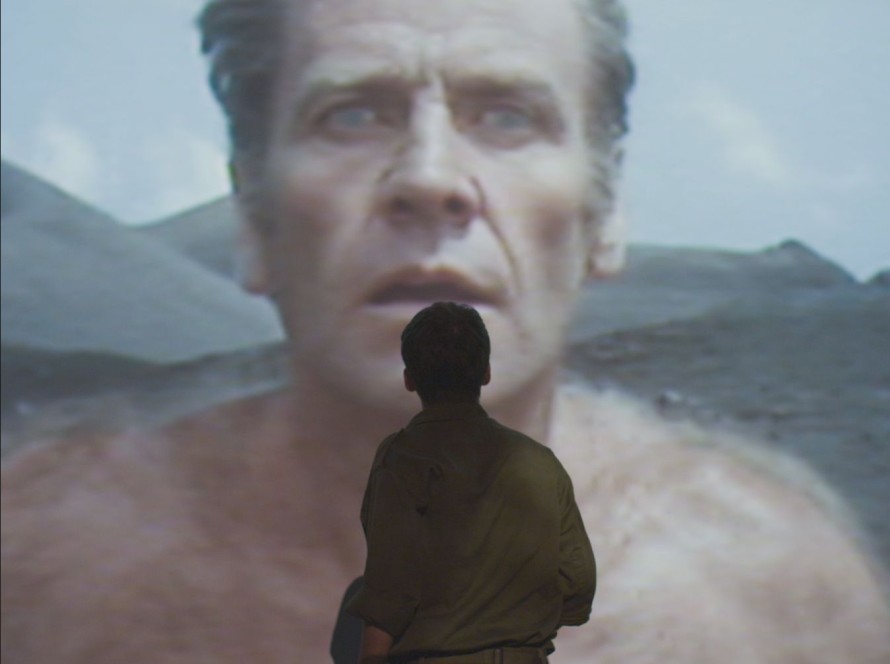
Daniel Moreshet in Lama? (Why?) by Nadav Lapid
The films MAR DE FOGO (SEA OF FIRE) and Lama? (Why?) seem to pick up exactly where we left off in last year's conversation, where you talked about the original conceptual spark that must be protected at all costs in filmmaking.
Yes, that spark, that moment that serves as the inspiration for a film and that must be protected in order to complete the work is absolutely in focus again. Sometimes that spark comes from other films, creating references by exuding history into today's world. MAR DE FOGO, Lama? and Snapshot Mon Amour are three films in this year's programme that build that kind of bridge, and at the same time, provide a certain layout for Berlinale Shorts 2015: The films seem to be arranged on axes of reflection, simultaneously creating lines of separation and connection within the entire programme. That goes for feature-length films as well as some films in the programme that focus on intervention in public spaces.
In Snapshot Mon Amour, Christian Bau takes up the existential question of how an extreme situation can influence the structure of a relationship. After the catastrophe in Fukushima, the divorce rate in Japan rose so quickly that a new Japanese word came into being, "Genpatsu-Rikon", comprised of the Japanese characters for “atom” and “divorce”. The filmmaker refers to Alain Resnais' classic Hiroshima, mon Amour (France / Japan 1959) with the title and some quotes in the film, simultaneously looking at the question of the limits of representation. All that compressed into just six minutes!
The Israeli filmmmaker Nadav Lapid, known for aesthetically controversial films, is unusually emotional and very personal in Lama?. Nadav Lapid condenses a few scenes into that one decisive moment after which nothing is as it was before: The publisher of "Cahiers du Cinéma" asks 40-year-old director Yoav to name a film image that influenced his work. The latter recalls his time as a young soldier, who loved to shoot. While his comrades play their own music over Mozart's Requiem in Pier Paolo Pasolini's Teorema (Italy 1968) in the cinema, he sees himself in the image of the screaming protagonist stumbling through the desert. He found the image that allows a perception of the possibilities inherent in cinema. Something similar can be said of MAR DEL FOGO. Even if the viewer isn't familiar with the referenced film Limite (Brazil 1931) by Mário Peixoto, the power of the images and the moment of inspiration sticks.
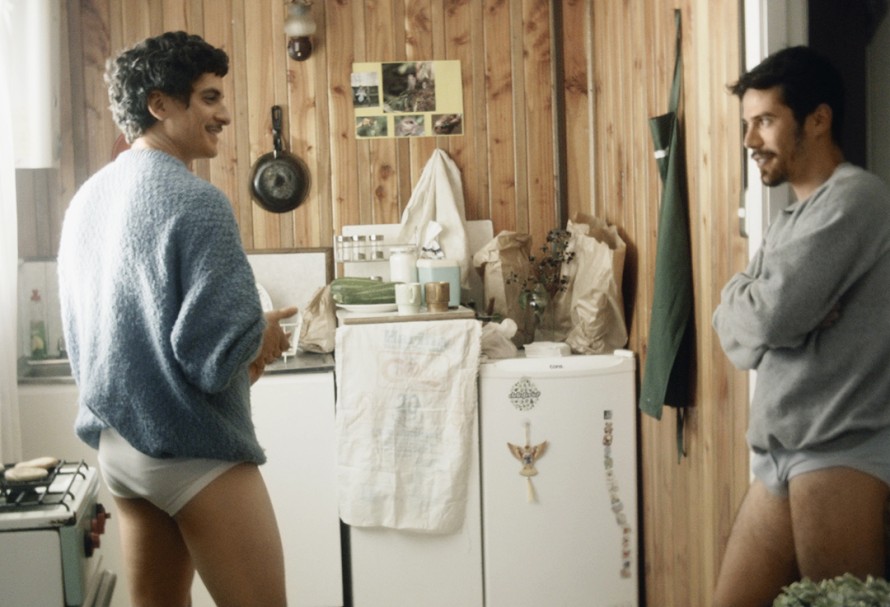
Antonio Altamirano and Samuel González in San Cristóbal by Omar Zúñiga Hidalgo
What Do We Want to Do with Our Lives?
Do you consciously seek out these points of reflection when curating the programme?
In the best sense, the submissions - whose numbers continue to increase each year - give me the opportunity to draw an excerpt from contemporary thought, in all imaginable formats, by distillation. The powerful narratives this year, for instance, pose existential questions, but less of a political nature than of a private one: Where are we actually? What are we moving towards? What do we want to do with our lives?
The gay men in San Cristóbal by Omar Zúñiga Hidalgo from Chile consciously decide against a direct confrontation with discrimination; it's by ignoring that vilification, and refusing to engage with it, that they emancipate themselves.
In Blood Below the Skin by Jennifer Reeder, two teenage girls profess their tender love for one another through the power of thought. The film's third protagonist, whose father has left, has to help her mother. It's through the deep, hopeful re-writing of the mother-daughter relationship that it becomes a conscious theme in the first place - something you don't see in the cinematic mainstream.
I feel Matt Porterfield touches on another central theme that pops up throughout the programme: The currently widespread phenomenon of ennui. Take What You Can Carry is an exact study of the inertia that takes hold when we as young adults are stuck on the fence, still not sure what we want to do with our lives. The protagonist is a member of the performance group Gob Squad, which acts as a kind of megaphone for an entire generation - Generation Y. Gob Squad bubbles over with things that many can't say.
And I'm really happy about the funny films in this year's programme: Bad at Dancing by Joanna Arnow, or The Mad Half Hour, a very laconic take on the ennui theme. There's a moment every day when house cats go nuts. Filmmaker Leonardo Brzezicki from Argentina refers to that moment at the beginning of his film, but moves on to a couple playing tennis. Suddenly, one of the pair refuses to continue playing because the whole situation seems absurd to him. Just like life. "Maybe we should break up", he suggests to his better half, who in turn reacts very coolly because he's familiar with his partner and his phases, and knows how to handle them.
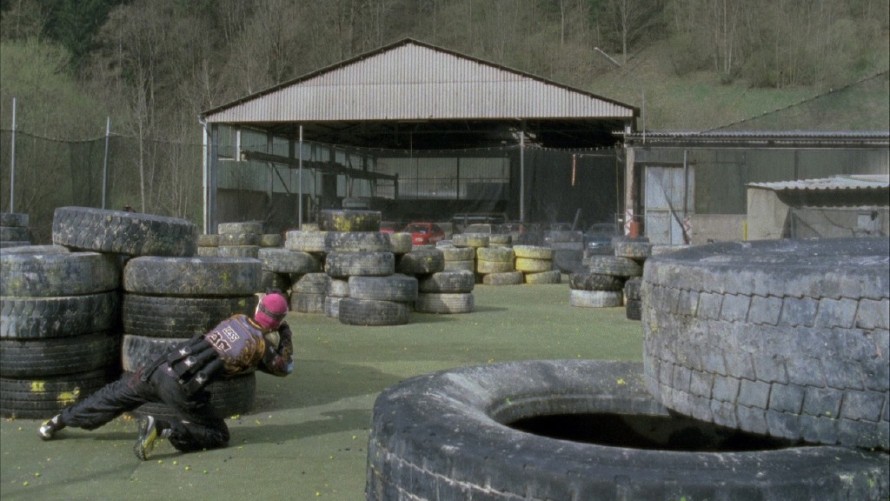
Of Stains, Scrap & Tires by Sebastian Brameshuber
Last year's Forum included the documentary Und in der Mitte, da sind wir (And There We are, in the Middle) by Sebastian Brameshuber, who filmed small-town Austrian youths for over a year on their path towards adulthood. The youths seemed paralysed, completely de-energised - except when playing paintball (incidentally also a subject explored in this year's Lama?). In Of Stains, Scrap & Tires, Sebastian Brameshuber picks up where he left off, following the African employees of a workshop adjacent to the same paintball field. At the workshop, cars no longer suitable for the European market are reprocessed for sale to Africa. The workers blankly observe the activity on the paintball field, making that same question - what do we want to do with our lives? - one of the film's central themes.
... in the well-fed western world.
Beeing well-fed doesn't necessarily need to be the problem, as long as one doesn't just sit back and relax with a full tummy.
'I look for films without safety nets. Films that take risks, films in which I can feel urgency and need.
In the summer of 2014, Mischa Leinkauf and Matthias Wermke flew white flags from the Brooklyn Bridge in New York City, and then edited the international TV coverage of that into their documentary Symbolic Threats (D: Mischa Leinkauf, Lutz Henke and Matthias Wermke). In doing what they did, they took a big personal risk and made a statement. But what statement exactly? Threat or art? Outrage or opportunity? Capitulation or attack?
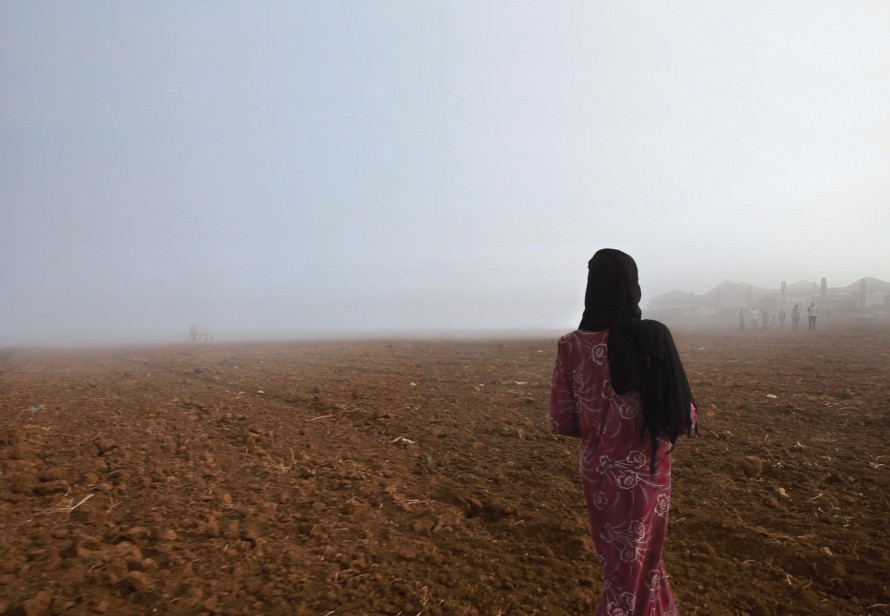
Fatoum al Hussein in El Juego del Escondite (Hide & Seek) by David Muñoz
David Muñoz and his film team visited a Syrian refugee camp in Lebanon. In El Juego del Escondite (Hide & Seek), he doesn't just ask the question of how reality can be represented, but also questions the arrangement between protagonist and documentarist by observing himself and his work process. What happens when reality doesn't live up to our own visions?
Axes of Reflection and Areas of Contrast
How have you arranged the films that reflect one another into programmes? How do you bring other films together with an extremely disturbing film like HOSANNA, for instance?
Despite the numerous references and cross-references, it was exceedingly difficult for me to group the films into programmes this year - precisely because they are so powerful.
HOSANNA by Na Young-kil is a bleak Korean film about a young man who can bring the dead back to life. But he gets no recognition, no gratitude for it. His interference changes nothing. The re-awakened are murdered again, a woman is raped again. “Hosanna” is an ancient cry of jubilation and entreaty, which according to the New Testament, was used by the crowds greeting Jesus when he rode into Jerusalem on a donkey. In the film, the joy is left out. After HOSANNA comes , a contemplative, food-for-thought film that gives the viewer time while also bringing them back to the here and now. And after that: Chitrashala (House of Paintings), which in turn represents another, completely different position on the question of individual moral positioning within a social structure. Hindu belief allows for a bodily unification with God. Amit Dutta tells of eternal love by breathing life into a collection of miniatures made and exhibited in the area of the Himalayas. So there's an interesting contrast created between films through their grouping into one short film programme.
That religious theme is also reflected in Lo Sum Choe Sum (3 Year 3 Month Retreat) by Dechen Roder from Bhutan. One Buddhist meditation practice requires a three-month retreat from all worldly things in order to attain a higher level of transformation. Following her retreat, most of which she spent in a prison, the young protagonist returns to her home to kill the man who raped her. But would that really change anything? Isn't it forgiveness that really takes us one step further, like in David Jansen's animated film Däwit, which was inspired by the woodcuts of Belgian graphic artist and painter Frans Masereel?
The theme axes are the arcs of the programme. Axes of reflection, as I already mentioned.
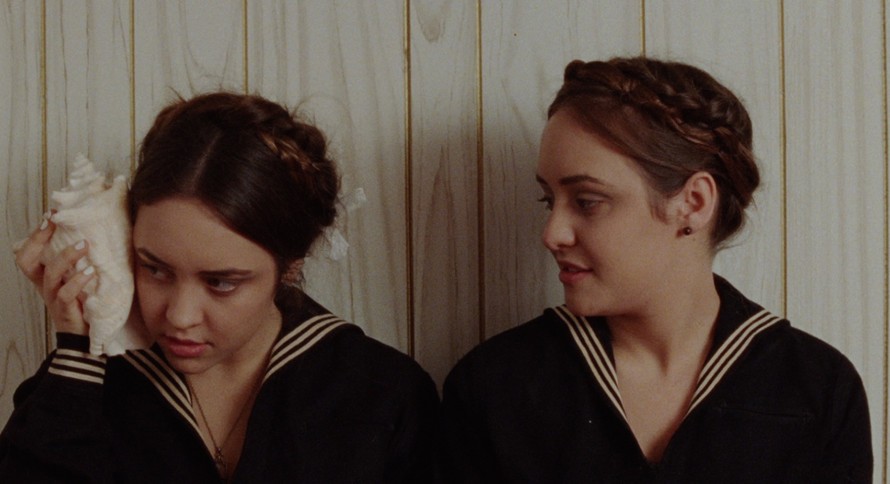
Alessandra Mesa and Anamari Mesa in Superior by Erin Vassilopoulos
Shifts in Meaning
Some directors have already had films at Berlinale Shorts. What developments are noticeable?
It's wonderful to be able to accompany filmmakers as they develop. Billy Roisz for instance is always becoming more emotional, if you can say that about experimental films. THE (D: Billy Toisz and Dieter Kovačič) is an experimentation with habits of visual perception and pays homage to horror film. With it, he builds a bridge to Superior by Erin Vassilopoulos, and in turn reflects the apocalyptic scenarios in HOSANNA and PLANET Σ by Momoko Seto on another level. With maku (veil), Yoriko Mizushiri presents her third subtle, sexy-playful, feminine animation. I'm curious to see how the audience discussion will be because she was so very shy last year. And Architektura by Ulu Braun is actually the quintessence of everything he's done in the past few years. Who decides on public space? What influence do architects have? And who is the client? The city or the investors?
In some films, landscape and environment aren't just settings, but seem to become actors in their own right.
SHADOWLAND is a contemplative, almost meditative work on the occupation of spaces, about shifts in meaning. In the style of great American photography by Ansel Adams and Alfred Stieglitz, it presents us with places that have been occupied by Hollywood. The Californian desert landscape is at turns Mars, Africa or North America.
In Lembusura by Wregas Bhanuteja, the post-colonial discourse experiences a shift: An ancient Indonesian legend is re-enacted - to the snorting amusement of its inheritors - and all the earnest of the conflict is nullified.
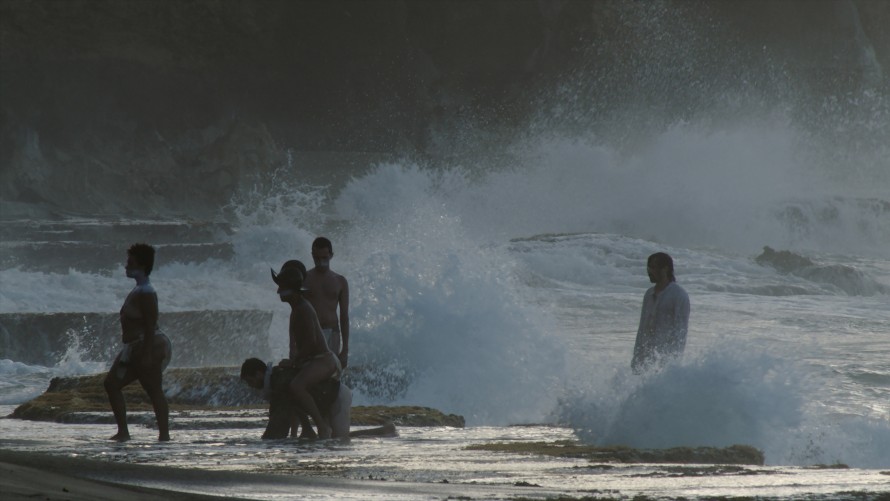
Lydela Leonor, Alexander Carver, Raul de Nieves, Carlos Solis-Keyser and Frankie Brun in La Isla está Encantada con Ustedes by Alexander Carver and Daniel Schmidt
La Isla está Encantada con Ustedes (The Island is Enchanted with You) by Alexander Carver and Daniel Schmidt links the post-colonial discourse with concrete events in Puerto Rican history: From the Spanish conquest of the late 15th century to its status as a tax haven for the pharmaceutical industry. Full of relish, the film shows how health and economy have always been connected. I'm really looking forward to seeing La Isla está Encantada con Ustedes on the big screen. And Dissonance by Till Nowak is another film that will really spread its wings in the cinema. Thanks to an incredibly skilful combination of 3D animation and theatrical film sequences, it takes some time for the viewer to realise that something is wrong with the protagonist and his perception. Reality and psychotic delusion are blurred, similar to the transitions between live action and animation.
I think you need an open-minded view to grasp the films in all their complexity. Which is why I'm so pleased about this year's jury, and that the members also have curating experience. And Berlinale Shorts has a new award this year, the Audi Short Film Award, through which we have the opportunity to honour a filmmaker's development and personal style.